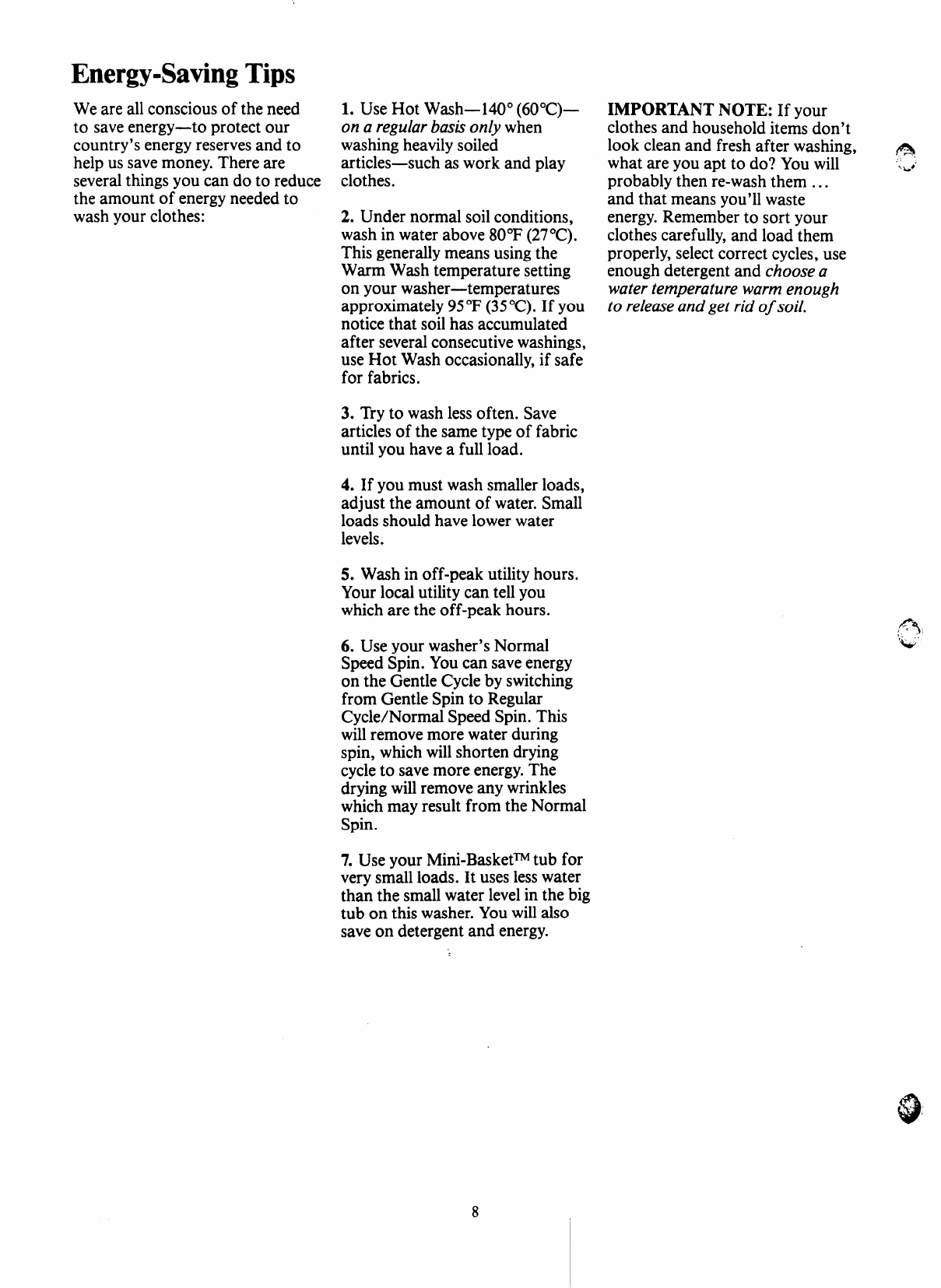
Energy-Saving Tips
We are all conscious of the need
to save energy—to protect our
country’s energy reserves and to
help us save money. There are
several things you can do to reduce
the amount of energy needed to
wash your clothes:
1. Use Hot Wash-140° (60°C)—
on a regular bask only when
washing heavily soiled
articles-such as work and play
clothes.
2. Under normal soil conditions,
wash in water above 80°F (27”C).
This generally means using the
Warm Wash temperature setting
on your washer-temperatures
approximately 95‘F (35‘C). If you
notice that soil has accumulated
after several consecutive washings,
use Hot Wash occasionally, if safe
for fabrics.
3. Try to wash less often. Save
articles of the same type of fabric
until you have a full load.
4. If you must wash smaller loads,
adjust the amount of water. Small
loads should have lower water
levels.
5. Wash in off-peak utility hours.
Your local utility can tell you
which are the off-peak hours.
6. Use your washer’s Normal
Speed Spin. You can save energy
on the Gentle Cycle by switching
from Gentle Spin to Regular
Cycle/Normal Speed Spin. This
will remove more water during
spin, which will shorten drying
cycle to save more energy. The
drying will remove any wrinkles
which may result from the Normal
Spin.
7. Use your Mini-Basket~ tub for
very small loads. It uses less water
than the small water level in the big
tub on this washer. You will also
save on detergent and energy.
‘:
IMPORTANT NOTE: If Your
clothes and household items don’t
look clean and fresh after washing, ~
what are you apt to do? You will
,,, ‘,
~1.#
probably then re-wash them ...
and that means you’ll waste
energy. Remember to sort your
clothes carefully, and load them
properly, select correct cycles, use
enough detergent and choose a
water temperature warm enough
to release and get rid of soil.
8


















